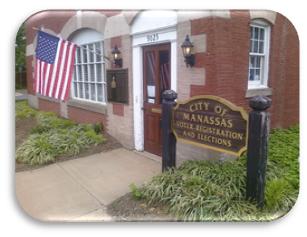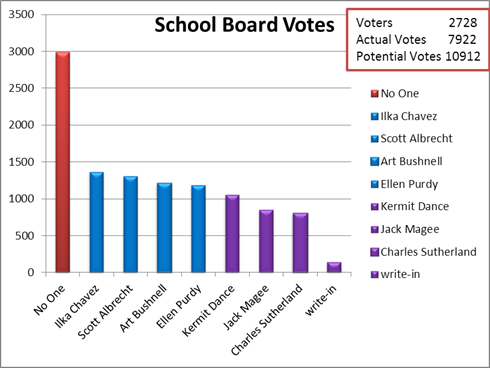 Congratulations to all the winners of last Tuesday’s Manassas City Elections. It was certainly one of the most contentious interesting that the City has seen in many years, as can be substantiated by our good Registrar, Linda Womack. From sign wars to record write-in ballots she was very busy. Kudos to her and her staff for a job well done.
Congratulations to all the winners of last Tuesday’s Manassas City Elections. It was certainly one of the most contentious interesting that the City has seen in many years, as can be substantiated by our good Registrar, Linda Womack. From sign wars to record write-in ballots she was very busy. Kudos to her and her staff for a job well done.
The one thing that counts in elections is who gets the most votes. In our City Council and School Board elections the voters are given as many votes as positions available. This year it was 3 for the Council and 4 for the Board. Now the voter is not required to cast all his or her potential votes, and in this election cycle that had a curious effect. In the City Council balloting, 19% of the potential votes were not cast, and in the School Board balloting 27% of the potential votes were not cast. This leaves us with the fact that, from the 2728 voters who showed up at the polls, No One got the most votes.


I am still considering whether this is simply an idle statistical curiosity or something substantial in the minds of the voters. I will leave you gentle reader to ponder what you think this says about the election and our City.

Rick, that’s pretty good, now if we could get the same result in the Presidential Race.
Interesting, but not necessarily correct. You are assigning all of the votes that were not cast to the “No One” column. But that would allow some people to “vote” for “No One” twice, if the voter only cast one of their three ballots. Since voters could not cast two ballots for one actual candidate, that gives “No One” an advantage. In other words, if “No One” was actually on the ballot, it might not have won because some voters who chose not to use two votes would have only been able to give “No One” one vote.
You make a good point Russ, No One certainly had an advantage. The most votes anyone candidate could get is the same as the total number of voters, 2728. No One could potentially get many more than that. Of course it would be silly to say No One won, but it is quite true to say No One got the most votes, even if 1, 2 or even 3 of those were from the same person. Those were votes that could have gone to an actual candidate. In the voting booth one has to intentionally select the non-vote – the vote for No One. The question is what is the significance, if any, of that?
I did ask the Registrar if they had data on the number of bullet voters, but they do not track that information. That would have made a very interesting chart, and I would be able to answer your question directly. The most I can say is that on average, per voter, 2.42 votes went to actual Council candidates and 0.58 went to No One, and 2.9 votes went to actual Board candidates and 1.1 to No One. This is what is reflected in my chart!
Rick,
The voting machines don’t let anyone look at an individual ballot, so all we have is totals, not individual voting patterns. You are right. That information would be interesting, but we can’t get it with the technology we have.
I think your “votes per voter” number is more interesting and useful than the graphs. Why was there so much more bullet voting for the School Board than City Council? I suspect identifying people by Party helped some voters cast a ballot for people they didn’t know, which they were unwilling to do for the School Board. The little (R) after some people’s name was enough to get some voters to feel comfortable casting their ballot, while they were not willing to vote for School Board members they knew nothing about.
Just a theory. This is an interesting analysis either way.
Thanks for your comments, Russ. They are helpful. My charts are really just a different perspective on the bullet vote. It is the exact same data as the “votes per voter,” only broken out for each candidate. If I had the data for individual bullet voters, I could tell how many individuals voted for No One. From the data we have, all that can be said is that No One maybe could have received enough individual votes to have “won,” especially the school board race.